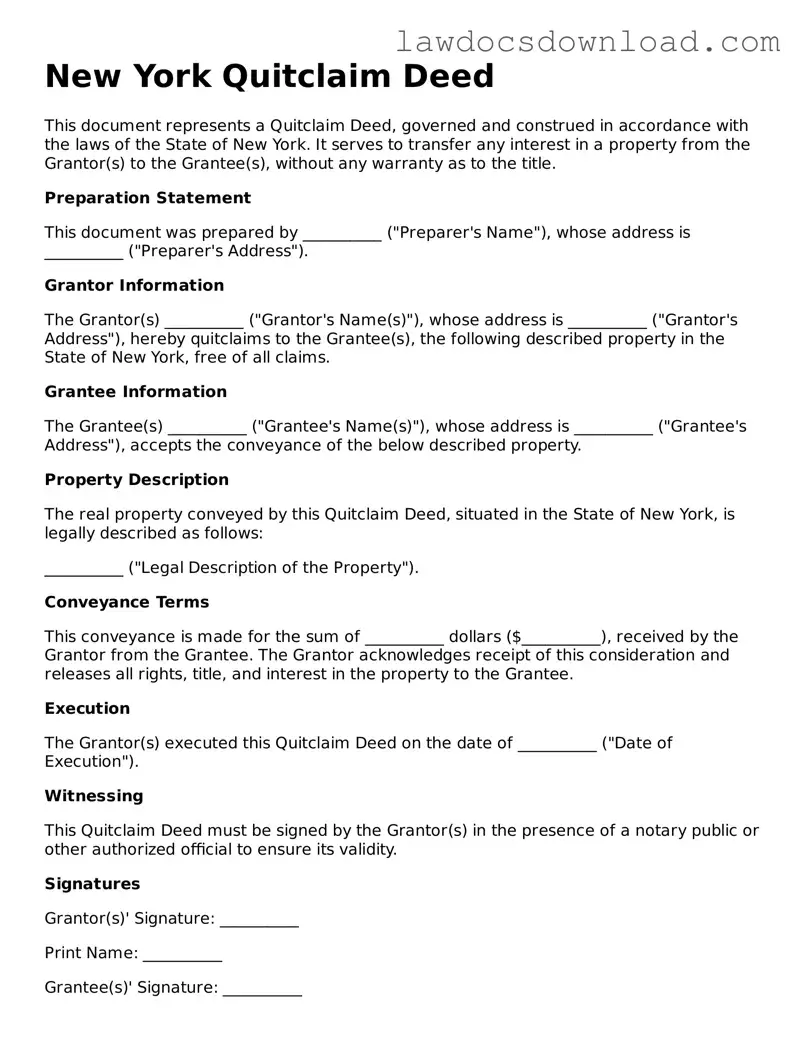New York Quitclaim Deed
This document represents a Quitclaim Deed, governed and construed in accordance with the laws of the State of New York. It serves to transfer any interest in a property from the Grantor(s) to the Grantee(s), without any warranty as to the title.
Preparation Statement
This document was prepared by __________ ("Preparer's Name"), whose address is __________ ("Preparer's Address").
Grantor Information
The Grantor(s) __________ ("Grantor's Name(s)"), whose address is __________ ("Grantor's Address"), hereby quitclaims to the Grantee(s), the following described property in the State of New York, free of all claims.
Grantee Information
The Grantee(s) __________ ("Grantee's Name(s)"), whose address is __________ ("Grantee's Address"), accepts the conveyance of the below described property.
Property Description
The real property conveyed by this Quitclaim Deed, situated in the State of New York, is legally described as follows:
__________ ("Legal Description of the Property").
Conveyance Terms
This conveyance is made for the sum of __________ dollars ($__________), received by the Grantor from the Grantee. The Grantor acknowledges receipt of this consideration and releases all rights, title, and interest in the property to the Grantee.
Execution
The Grantor(s) executed this Quitclaim Deed on the date of __________ ("Date of Execution").
Witnessing
This Quitclaim Deed must be signed by the Grantor(s) in the presence of a notary public or other authorized official to ensure its validity.
Signatures
Grantor(s)' Signature: __________
Print Name: __________
Grantee(s)' Signature: __________
Print Name: __________
Notarization
This document was acknowledged before me on __________ (date) by __________ ("name(s) of the person(s)"), known to me or satisfactorily proven to be the person(s) whose name(s) is/are subscribed to the within instrument and acknowledged that he/she/they executed the same for the purposes therein contained.
In Witness Whereof, I hereunto set my hand and official seal.
Notary Public's Signature: __________
Print Name: __________
Commission Expires: __________
